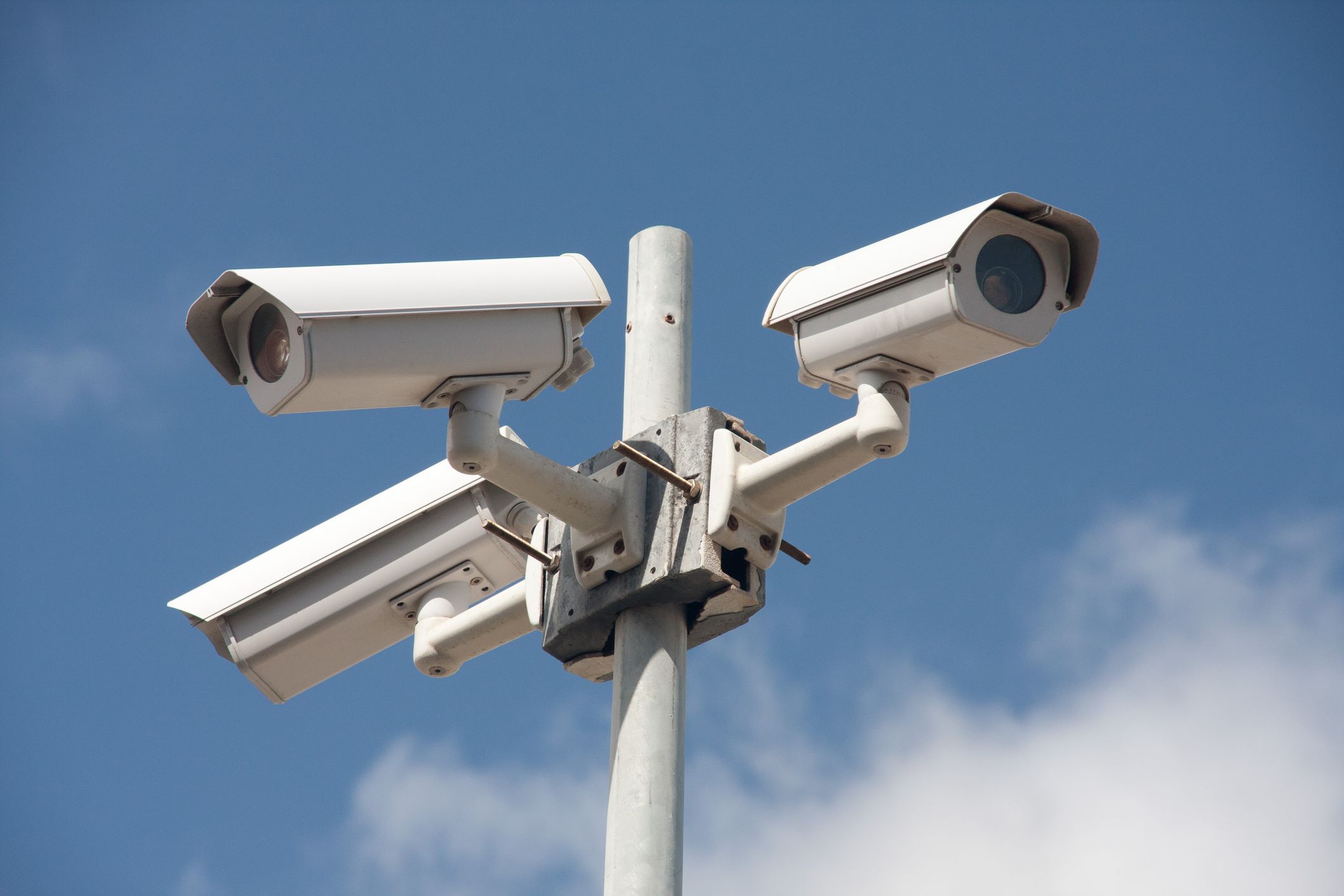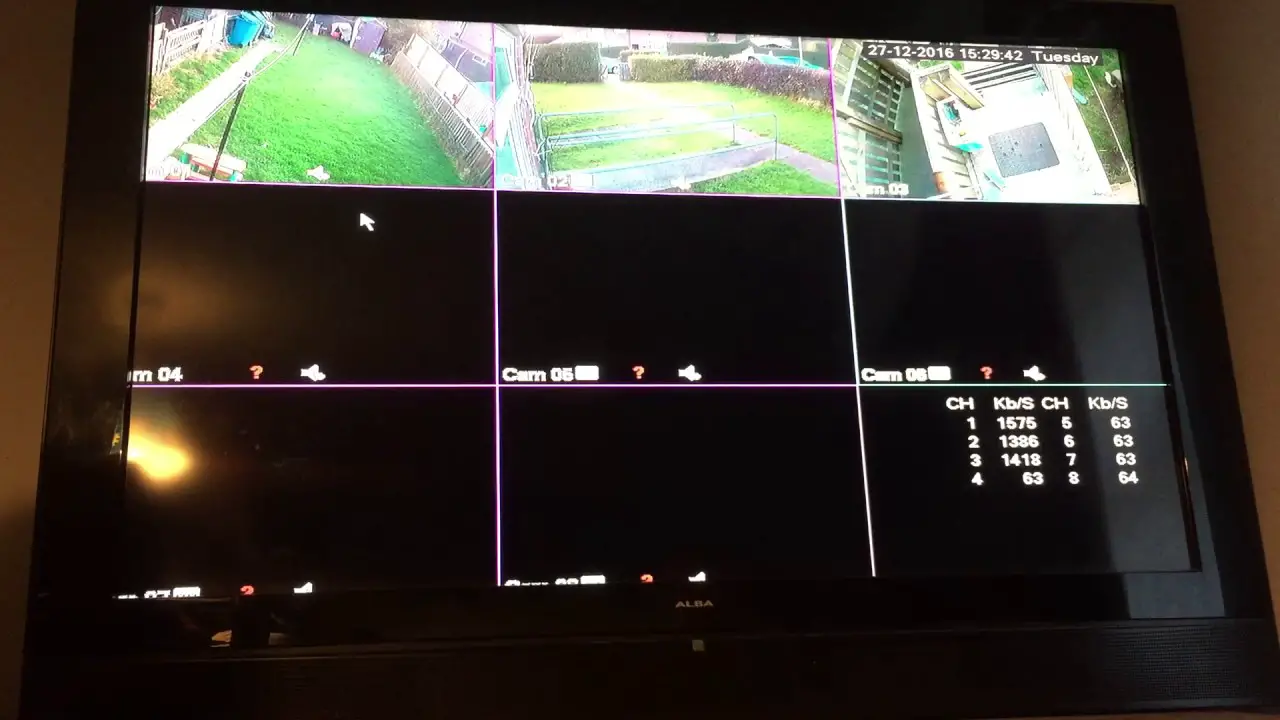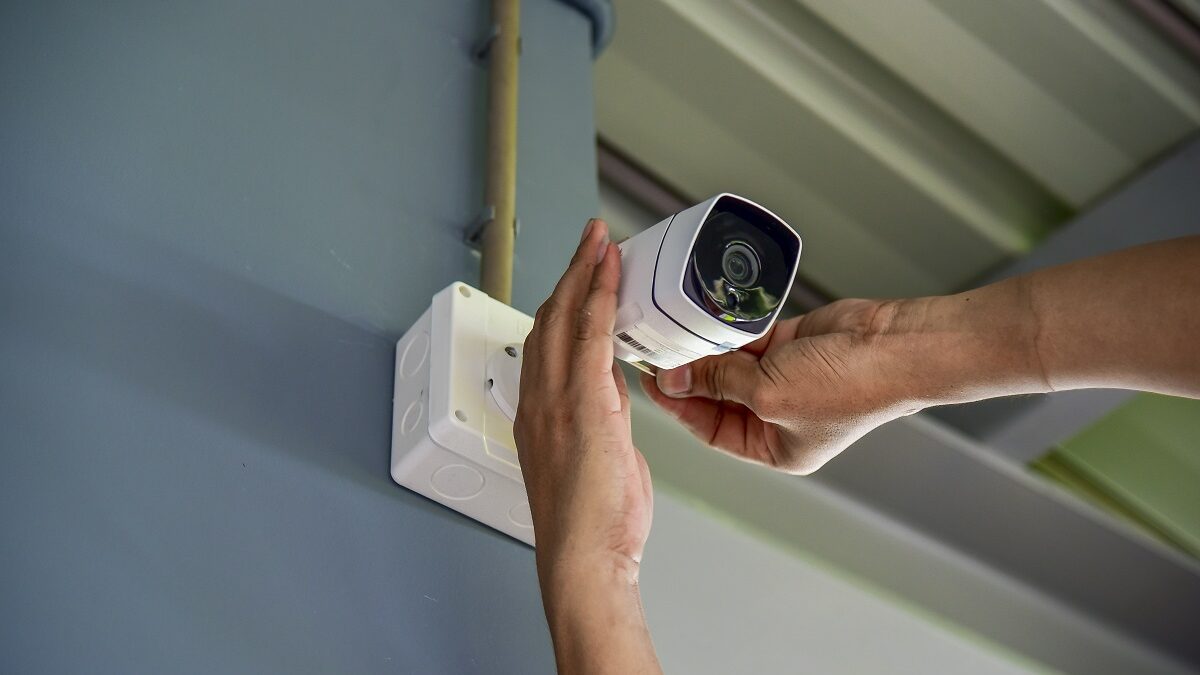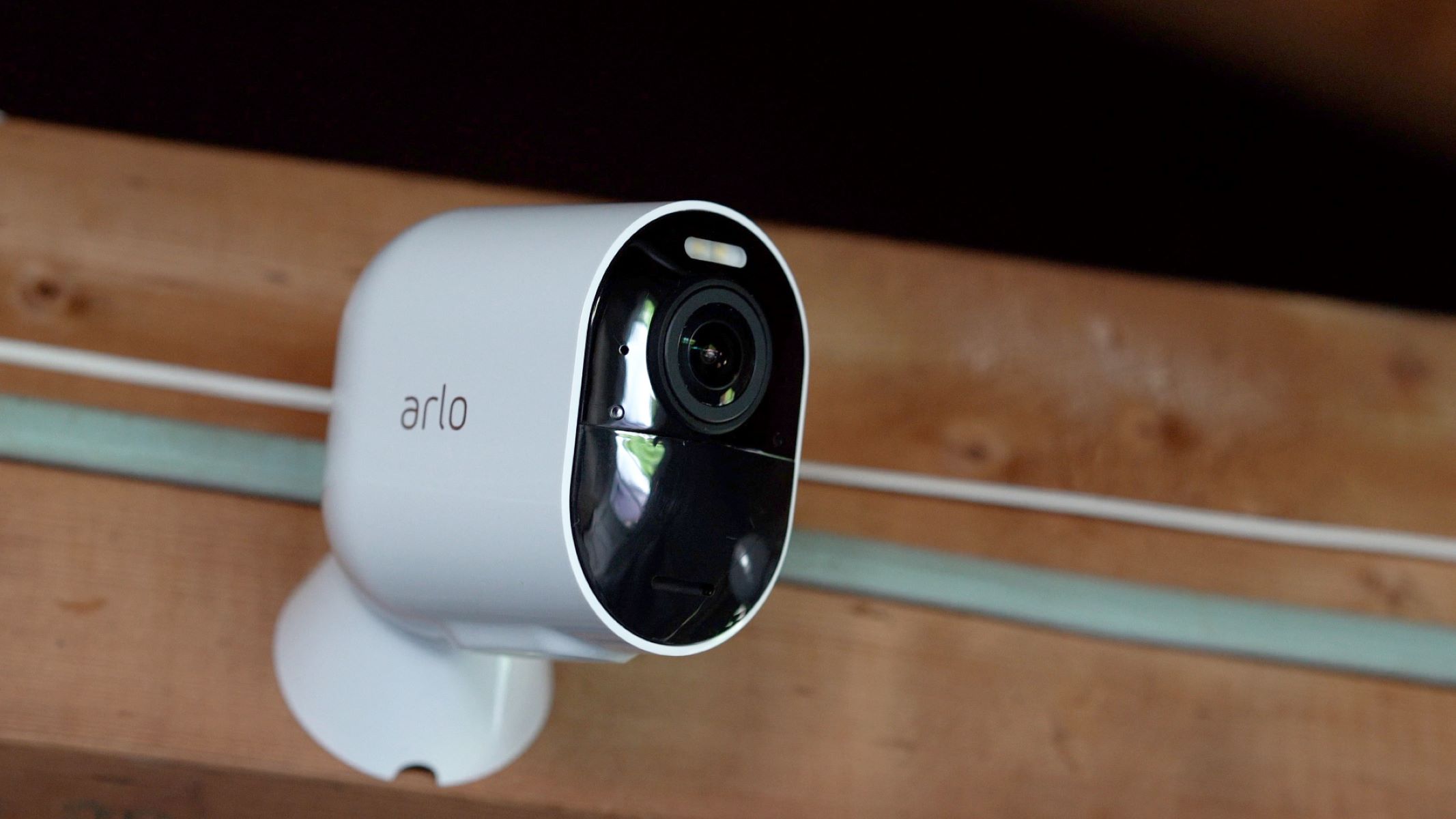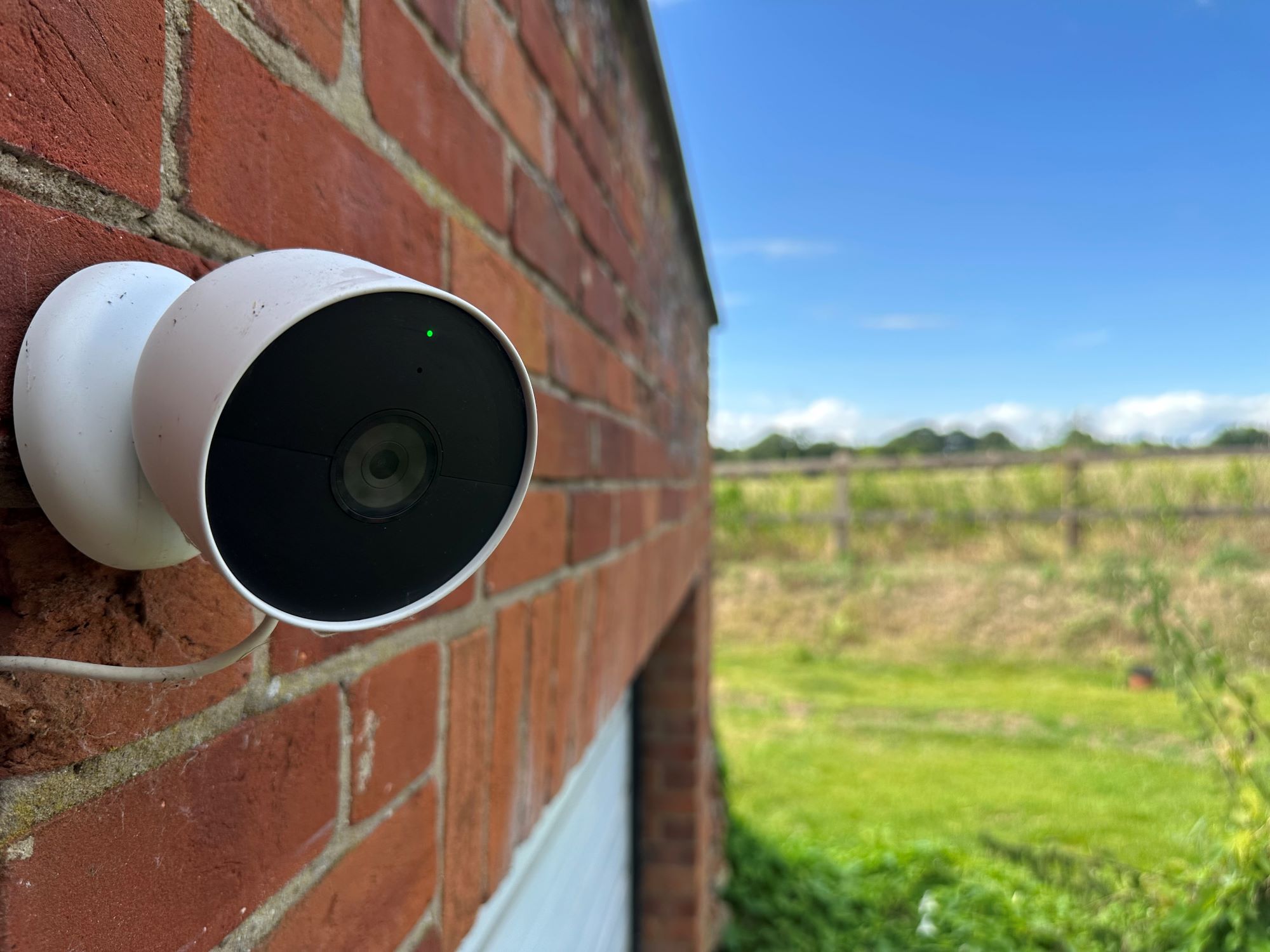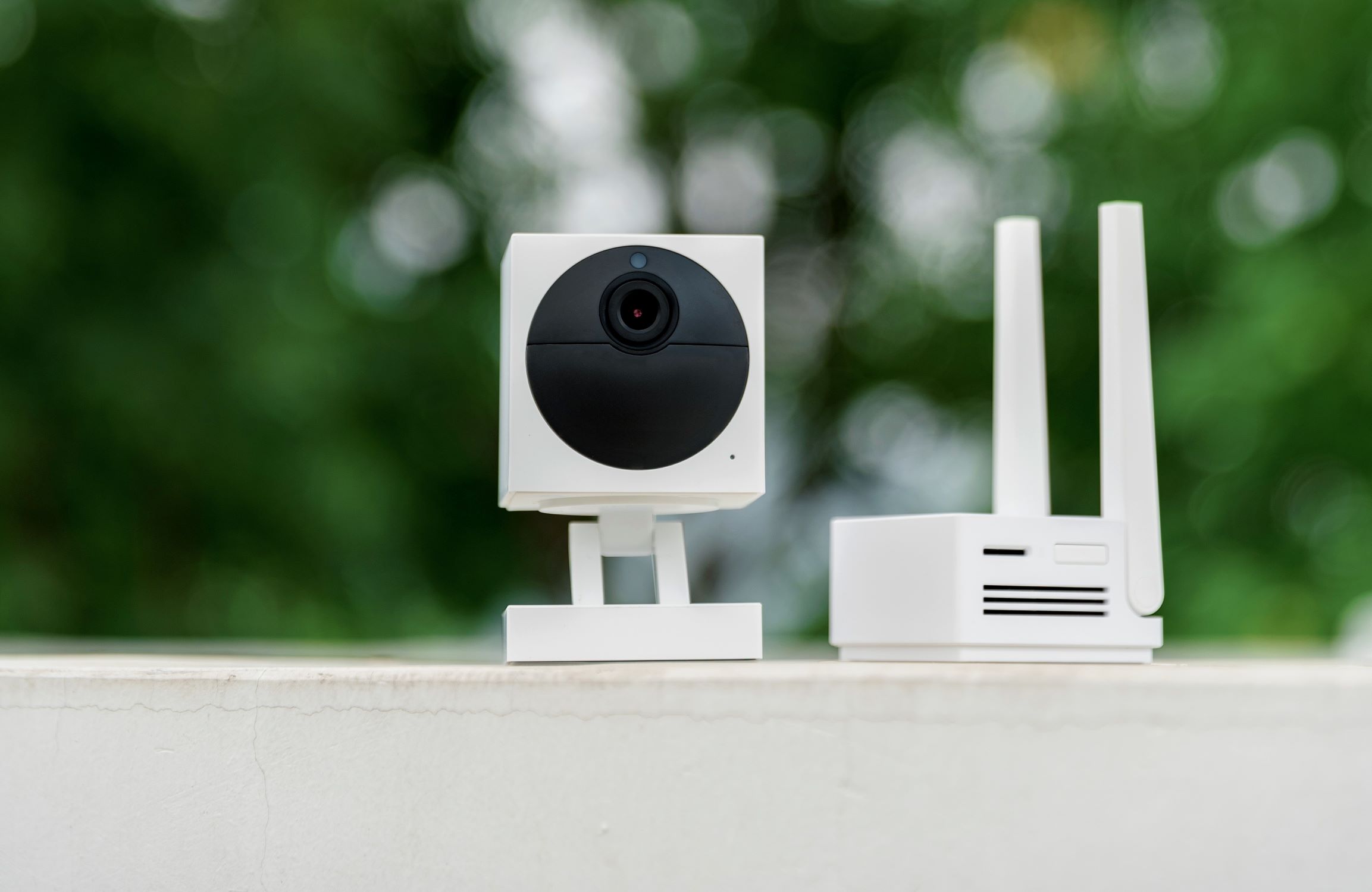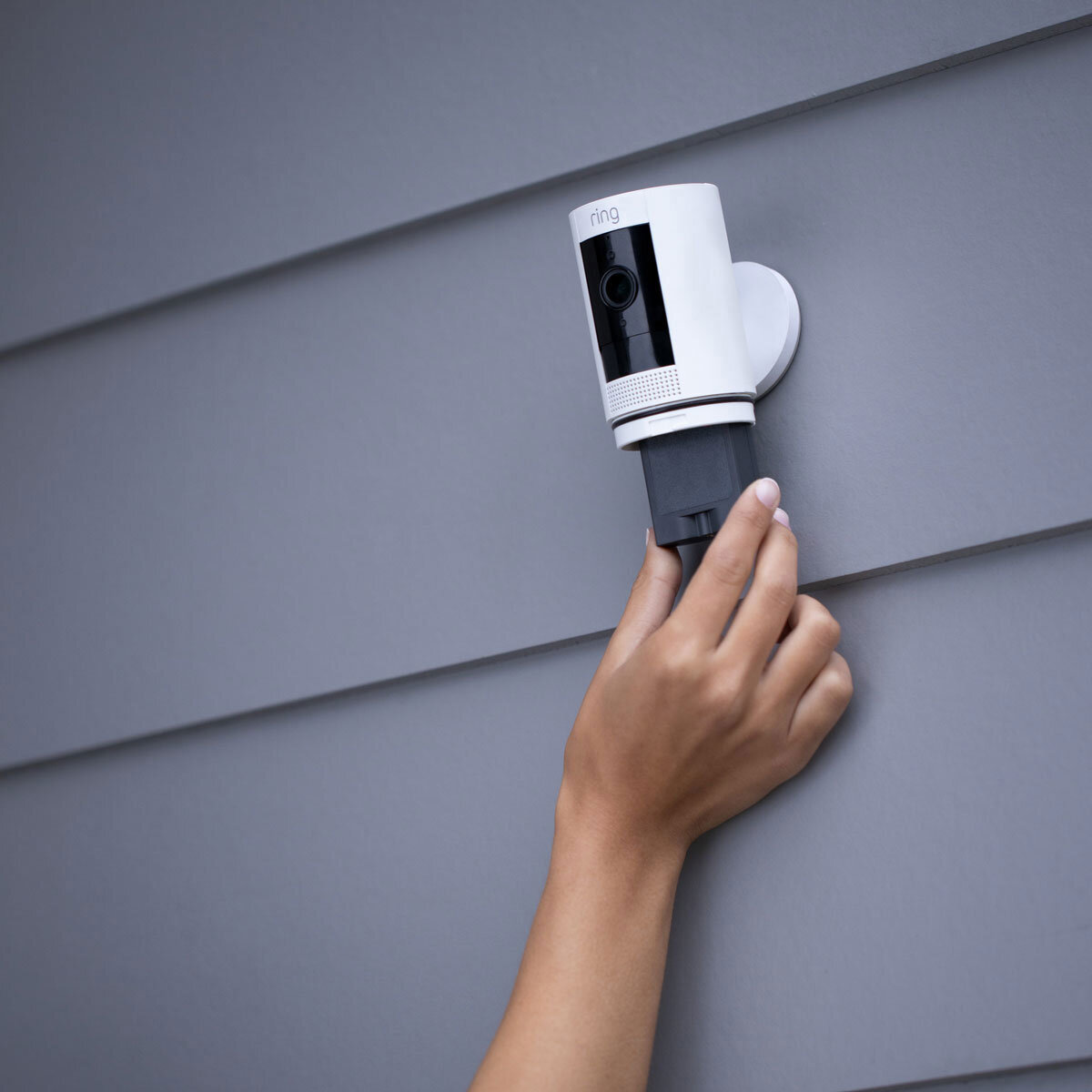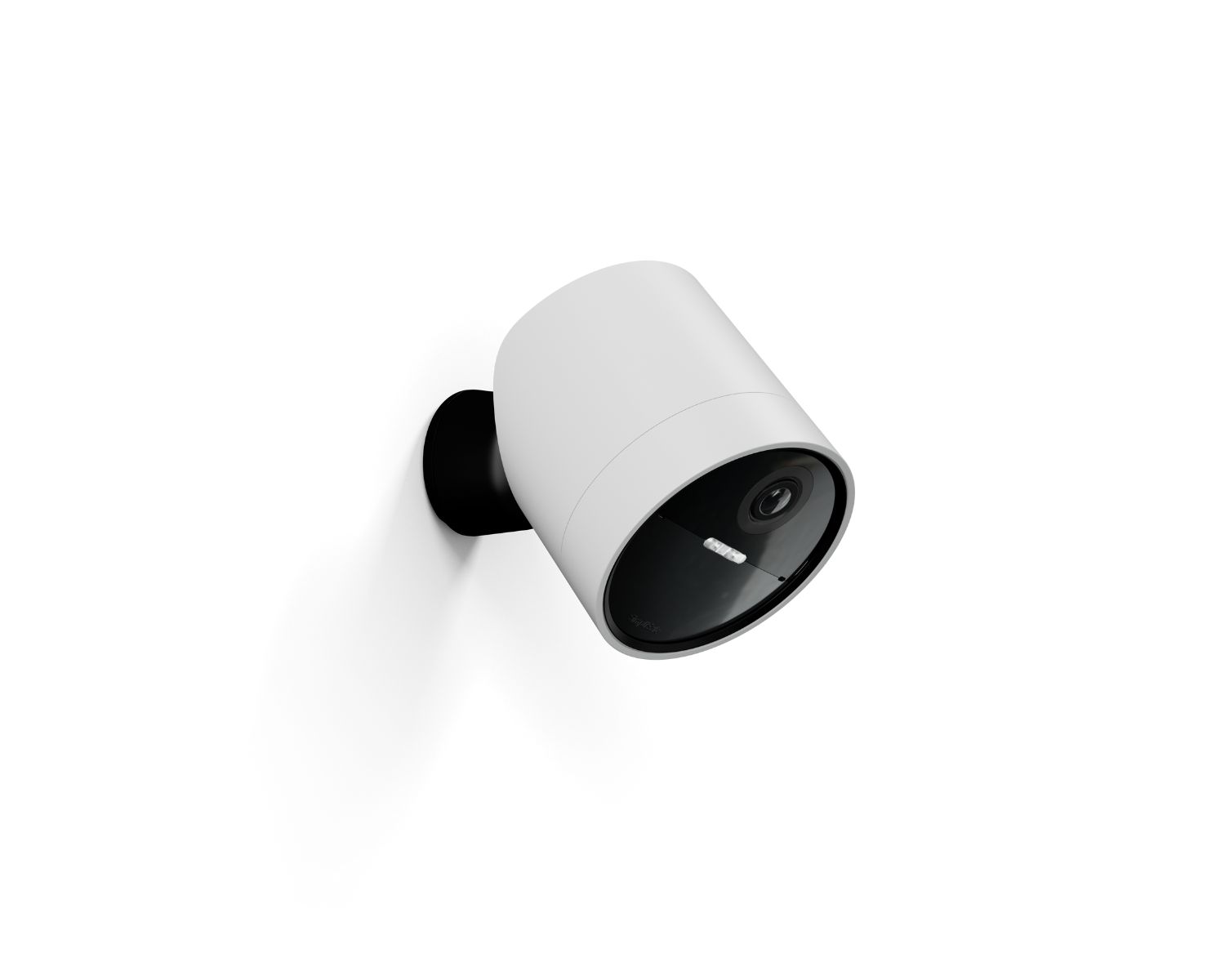Home>Home Security and Surveillance>How Long Does Security Camera Footage Last?
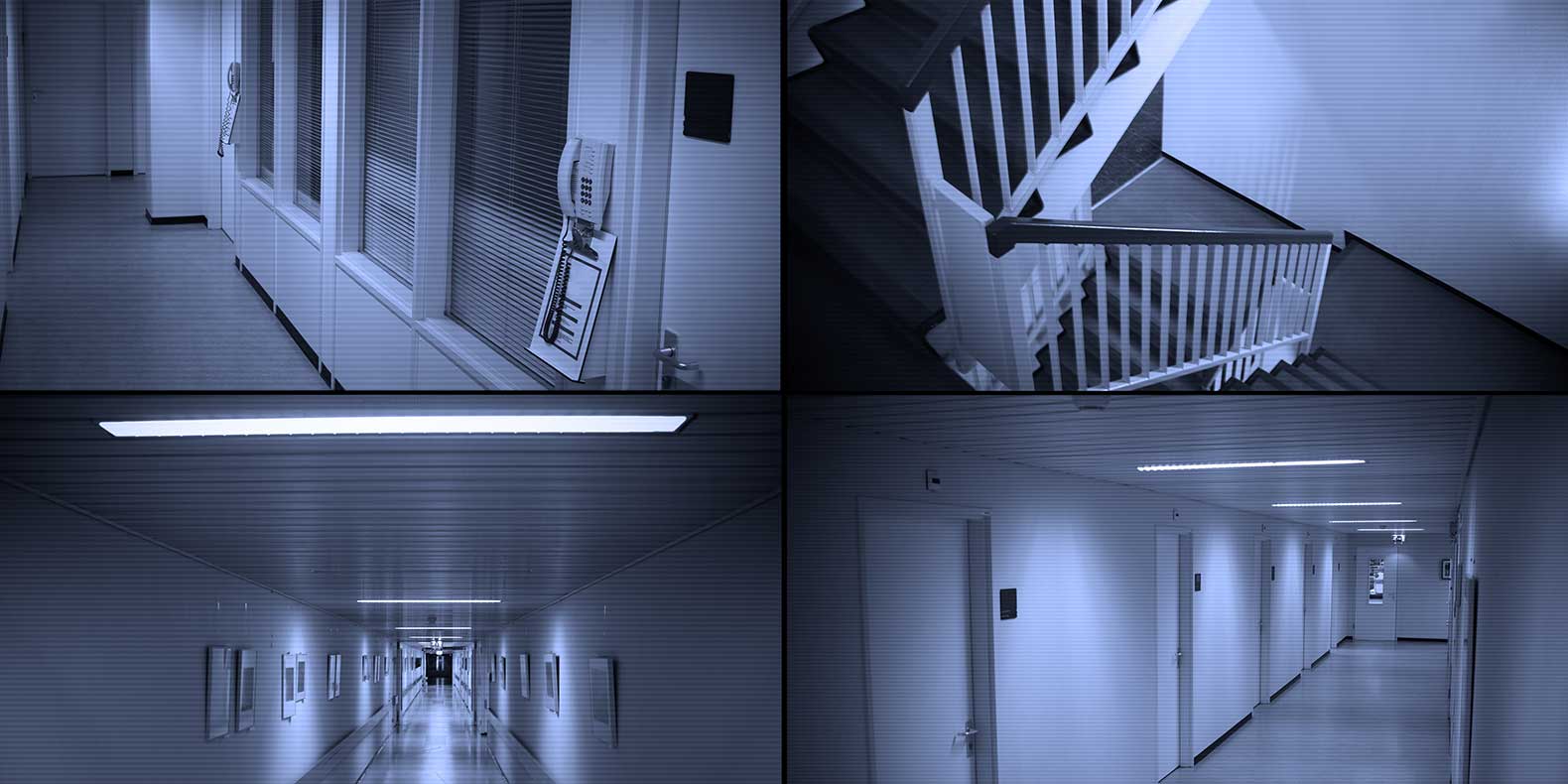

Home Security and Surveillance
How Long Does Security Camera Footage Last?
Modified: August 28, 2024
Discover how long home security and surveillance camera footage lasts. Find out the important details to ensure your property's safety and peace of mind.
(Many of the links in this article redirect to a specific reviewed product. Your purchase of these products through affiliate links helps to generate commission for Storables.com, at no extra cost. Learn more)
Introduction
Home security and surveillance systems play a crucial role in keeping our homes and loved ones safe. With advancements in technology, it has become easier than ever to monitor our properties and capture valuable footage of any incidents or events. But how long does this footage last before it is overwritten or deleted?
In this article, we will explore the importance of security camera footage retention, the factors affecting the duration of footage storage, legal requirements and regulations, industry standards for retention, best practices for storing and preserving footage, the role of cloud storage, and real-life examples and case studies.
Having a clear understanding of how long security camera footage lasts is vital for homeowners and businesses alike. It can help determine the effectiveness of surveillance systems, provide evidence for investigations, and contribute to the overall security strategy of a property.
Whether you’re considering installing a home security system or are simply curious about the subject, this article will provide you with valuable insights into the retention of security camera footage.
Key Takeaways:
- Properly retaining security camera footage is crucial for solving crimes, protecting against false claims, and ensuring workplace safety. Factors like storage capacity and legal compliance impact the duration of footage retention.
- Cloud storage enhances security camera footage retention by offering remote accessibility, scalability, and data redundancy. Real-life examples highlight the importance of retained footage in investigations and liability protection.
Read more: How To Store Security Camera Footage
Importance of Security Camera Footage Retention
Security camera footage retention is of utmost importance for several reasons. It serves as a valuable source of evidence in the event of a crime, helps identify suspects, and aids in investigations. Let’s explore why retaining security camera footage is crucial:
- Evidence for Investigations: In the unfortunate event of a burglary, vandalism, or other criminal activity, security camera footage can provide vital evidence. This footage can capture the intruder’s actions, appearance, and any identifiable features, helping law enforcement agencies identify and apprehend the culprit.
- Crime Deterrence: Knowing that security camera footage is properly retained can act as a deterrent for potential criminals. If they are aware that their actions are being recorded and that the footage will be available to authorities, they may think twice before attempting criminal activities on the property.
- Insurance Claims: The retained footage can also assist in insurance claims. In case of property damage, accidents, or liability disputes, the recorded evidence can provide clarity and support the claim, speeding up the process and minimizing disputes.
- Employee Accountability: For businesses, security camera footage can help monitor employee behavior, ensure adherence to protocols, and investigate any suspected misconduct. It can provide an objective view of incidents, preventing false accusations and protecting both employees and employers.
- Prevent False Claims: In addition to employee accountability, security camera footage can protect businesses from false claims by customers or visitors. In situations where there may be a dispute over an event or accident, the footage can serve as an objective record of what actually occurred.
Retaining security camera footage ensures that these benefits are accessible when needed. However, it is important to consider various factors that can affect how long the footage lasts before it is overwritten or deleted.
In the following sections, we will delve into these factors, including legal requirements, industry standards, best practices for storage, and the role of cloud storage in preserving security camera footage.
Factors Affecting the Duration of Security Camera Footage
Several factors come into play when determining how long security camera footage lasts before it is overwritten or deleted. Understanding these factors is essential for proper planning and ensuring that important footage is retained for the desired duration. Let’s explore some of the key factors:
- Storage Capacity: The storage capacity of the recording device, such as a hard drive or network-attached storage (NAS), plays a significant role in determining the duration of footage retention. The larger the storage capacity, the longer the footage can be stored before it starts to be overwritten. It is crucial to consider the size and quality of the footage, as higher resolution and frame rates consume more storage space.
- Video Compression: The compression method used to store the video footage affects the required storage capacity. Advanced video compression algorithms, such as H.264 or H.265, help reduce the file size while maintaining reasonable video quality. Efficient compression techniques allow for longer retention periods without compromising video clarity.
- Frame Rate and Resolution: Higher frame rates and resolutions produce clearer and more detailed footage but require more storage space. The frame rate determines the number of frames captured per second, while the resolution refers to the number of pixels used to display the image. Balancing the desired video quality with storage constraints is crucial for effective footage retention.
- Camera Settings: The settings of individual cameras within a surveillance system can impact the duration of footage retention. Adjusting parameters such as motion detection sensitivity, scheduled recording times, and pre-event recording can optimize storage usage. For example, setting cameras to record only when motion is detected can significantly reduce the amount of footage stored.
- Retention Policy: The retention policy dictates how long the recorded footage is retained before being deleted or overwritten. This can be influenced by various factors, including legal requirements, business needs, and the importance of the footage. It is essential to establish a retention policy that aligns with your specific requirements and complies with any relevant regulations.
- System Maintenance: Regular system maintenance is crucial to ensuring the reliability and longevity of security camera footage. This includes checking storage devices for errors, implementing backup procedures, and conducting software updates to address any performance or security issues. Neglecting maintenance tasks can lead to data loss or footage corruption.
Understanding these factors and their impact on the duration of security camera footage retention allows for effective planning and optimization of surveillance systems. In the next sections, we will explore legal requirements and regulations, industry standards, and best practices for storing and preserving security camera footage.
Legal Requirements and Regulations
When it comes to retaining security camera footage, it is essential to understand and comply with relevant legal requirements and regulations. These laws vary depending on the country, state, or local jurisdiction. Ignoring or neglecting these regulations can result in legal consequences and may undermine the validity of the footage as evidence. Here are some important considerations:
- Consent and Privacy Laws: In many jurisdictions, there are laws governing the use of surveillance cameras and the collection of personal information. It is crucial to obtain consent from individuals who may be recorded and to clearly display signage indicating the presence of surveillance cameras. Additionally, there may be restrictions on recording certain areas, such as private residences, restrooms, or changing rooms. Familiarize yourself with the specific consent and privacy laws applicable to your location.
- Retention Period: Some jurisdictions impose specific retention periods for security camera footage. These periods can vary depending on the nature of the property being monitored and the type of recording (e.g., public spaces vs. private residences). It is crucial to understand and comply with these retention requirements to avoid any legal implications.
- Data Protection Regulations: In many countries, data protection regulations govern the collection, storage, and use of personal data, including video surveillance footage. These regulations often require implementing security measures to protect the stored footage from unauthorized access or breaches. Compliance with data protection regulations, such as the European Union’s General Data Protection Regulation (GDPR), is essential to ensure the lawful handling of recorded footage.
- Access and Sharing: Depending on the jurisdiction, there may be specific rules regarding who can access and share surveillance footage. For example, in a business setting, only authorized personnel may be allowed access to the recorded footage, and sharing it outside the organization may require proper authorization or a valid legal request. Understanding and adhering to these rules helps maintain the integrity and legality of the recorded footage.
- Notification Requirements: Some jurisdictions require notifying individuals that they are being recorded by surveillance cameras. This notification can be in the form of visible signage indicating the presence of cameras or verbal announcements. Compliance with these notification requirements not only helps ensure legal compliance but also contributes to a culture of transparency and accountability.
- Admissibility as Evidence: To use security camera footage as evidence in a legal proceeding, it is important to preserve the integrity and authenticity of the footage. This includes maintaining a proper chain of custody, documenting any tampering or modifications, and adhering to legal procedures for handling and presenting the evidence in court. Consult with legal experts to ensure that your security camera footage is admissible and can effectively support your case.
It is vital to consult with legal professionals familiar with the local laws and regulations pertaining to security camera footage retention. Staying informed and compliant with these legal requirements will help protect your rights, maintain the integrity of the footage, and ensure its effectiveness as evidence if needed.
Industry Standards for Security Camera Footage Retention
While legal requirements and regulations provide a baseline for security camera footage retention, industry standards can further guide organizations in establishing appropriate retention periods. These standards are developed by industry associations, professional organizations, and experts in the field. Here are some common industry standards to consider:
- Security Industry Association (SIA): The SIA offers guidelines on various aspects of video surveillance, including retention periods. Their recommendations often take into account factors such as security needs, the level of risk, and the type of facility being monitored. Keeping up to date with SIA guidelines can help ensure that your security camera footage retention aligns with industry best practices.
- National Institute of Standards and Technology (NIST): NIST provides guidance on cybersecurity best practices and standards. While their focus is broader than just video surveillance, they offer valuable insights on securing video data and setting appropriate retention policies. Following NIST guidelines can help safeguard the integrity and confidentiality of your stored footage.
- Insurance Industry Standards: Insurance companies often have their own guidelines and requirements for security camera footage retention. These standards are aimed at assessing risk and reducing liability. Compliance with insurance industry standards can facilitate the claims process and may even lead to potential premium discounts.
- Vertical-Specific Standards: Certain industries or sectors, such as healthcare or banking, may have specific standards and regulations that dictate security camera footage retention. These standards address the unique needs and challenges of these sectors, ensuring compliance with relevant laws and industry-specific requirements.
- External Audits and Certifications: Organizations that undergo external audits or strive for industry certifications, such as ISO 27001 for information security management, should consider incorporating security camera footage retention into their compliance objectives. Adhering to recognized standards and certifications helps demonstrate a commitment to best practices and can provide assurance to stakeholders.
It is important to note that industry standards are not one-size-fits-all solutions. They serve as guidelines and should be adapted to the specific needs and circumstances of your organization. Factors such as the level of security required, the nature of the facility being monitored, and any unique compliance requirements in your industry should be taken into account when establishing your security camera footage retention policy.
By following industry standards, organizations can enhance the effectiveness of their security camera systems, align with best practices, and demonstrate a commitment to maintaining a secure environment.
Most security camera footage is stored for 30-90 days, but this can vary depending on the system and storage capacity. It’s important to check and adjust your settings accordingly.
Best Practices for Storing and Preserving Security Camera Footage
Storing and preserving security camera footage properly is crucial to maintain its integrity, accessibility, and usefulness. Implementing best practices ensures that the footage remains reliable and can be effectively utilized when needed. Here are some key best practices for storing and preserving security camera footage:
- Redundant Storage: To minimize the risk of data loss, it is advisable to have redundant storage systems in place. This can involve backing up footage to multiple locations, including local storage devices and off-site solutions. Redundancy ensures that even if one storage medium fails, the footage remains accessible.
- Regular Backups: Schedule regular backups of the footage to ensure that it is protected in case of a storage system failure or a security breach. Automate the backup process whenever possible to minimize the risk of human error and ensure consistency.
- Secure Storage: Implement appropriate security measures to protect the stored footage from unauthorized access or tampering. This can include encryption of the stored data, restricted access controls, and secure storage media. Ensure that passwords and access credentials are strong and regularly updated.
- Monitoring and Maintenance: Regularly monitor the storage systems to identify any issues or potential failures. Implement monitoring software or tools that can alert you to storage capacity limits, errors, or anomalies. Conduct routine maintenance tasks, such as disk checks and firmware updates, to ensure the optimal performance and reliability of the storage infrastructure.
- Retention Policy: Establish a well-defined retention policy that aligns with legal requirements, industry standards, and your organization’s specific needs. Document and communicate the retention policy clearly to all stakeholders involved in the handling and storage of security camera footage.
- Metadata Management: Properly manage the associated metadata of the footage, including timestamps, camera names, and event details. Accurate metadata enhances searchability and facilitates quick retrieval of specific footage when required.
- Regular Testing: Periodically test the integrity of the stored footage by retrieving and reviewing samples. This helps ensure that the footage is not corrupted and can be effectively utilized in case of an incident or investigation.
- Scalability: Consider the future scalability of your storage system. As your surveillance needs grow, ensure that your storage capacity can accommodate the increasing volume of footage. Planning for scalability avoids long-term storage challenges and potential data loss.
- Training and Documentation: Train employees responsible for managing security camera footage on proper storage and preservation practices. Document standard operating procedures (SOPs) to ensure consistency and provide guidance in case of personnel changes or system upgrades.
By adhering to these best practices, organizations can ensure the long-term preservation and accessibility of their security camera footage. This promotes the effectiveness of the surveillance system, enables timely retrieval of critical footage, and facilitates compliance with legal and industry requirements.
The Role of Cloud Storage in Retaining Security Camera Footage
Cloud storage has revolutionized the way organizations store and retain security camera footage. Instead of relying solely on local storage devices, cloud storage offers a range of benefits that can enhance the security, accessibility, and scalability of retaining security camera footage. Here are some key aspects of the role cloud storage plays in footage retention:
- Remote Accessibility: Cloud storage allows users to access their security camera footage from any location with internet connectivity. This remote accessibility is particularly useful for businesses with multiple locations or homeowners who want to monitor their property while away.
- Data Redundancy: Cloud storage providers typically replicate data across multiple servers and data centers, ensuring data redundancy. This redundancy minimizes the risk of data loss due to hardware failures or natural disasters.
- Scalability: Cloud storage offers near-infinite scalability, enabling organizations to scale their storage needs based on their requirements. Whether you need to store days or years’ worth of footage, cloud storage can accommodate large volumes of data without the need to invest in additional local storage devices.
- Cost-Effectiveness: Cloud storage eliminates the need for expensive on-premises infrastructure and maintenance costs. Instead, organizations can leverage a pay-as-you-go model, only paying for the storage they use. This scalability and cost-effectiveness make cloud storage an attractive option for footage retention.
- Data Security: Reputable cloud storage providers employ state-of-the-art security measures to protect stored data. This includes encryption of data during transmission and at rest, regular security audits, and compliance with industry security standards. Storing footage in the cloud can often provide a higher level of security compared to managing local storage systems.
- Data Longevity: Cloud storage ensures the longevity of security camera footage. Local storage devices may degrade over time, resulting in data loss or corruption. Cloud storage providers, on the other hand, employ robust storage technologies that maintain the integrity of the data for extended periods.
- Data Recovery: In the event of a hardware failure or data loss, cloud storage providers typically offer robust data recovery mechanisms. This reduces the downtime and ensures that the security camera footage remains accessible even in case of unexpected incidents.
- Integration with Analytics: Cloud storage can integrate with advanced video analytics tools to extract insights and enhance the value of the recorded footage. Video analytics technologies can detect patterns, identify suspicious activities, and facilitate proactive security measures.
It is important to note that while cloud storage offers numerous benefits, it also comes with potential considerations. These include internet bandwidth requirements, data privacy concerns, and reliance on external service providers. It is crucial to assess the specific needs and security requirements of your organization before opting for cloud storage as the primary method for retaining security camera footage.
Nevertheless, cloud storage plays a significant role in modern security camera systems, offering flexibility, accessibility, scalability, and enhanced data security. It empowers organizations to leverage advanced technologies, streamline operations, and ensure the long-term retention and accessibility of their valuable security camera footage.
Real-Life Examples and Case Studies
To illustrate the importance of security camera footage retention, let’s explore a few real-life examples and case studies where retained footage played a critical role:
- Home Burglary Investigation: In a residential neighborhood, a home was targeted and burglarized during the daytime while the owners were at work. Thanks to the homeowner’s surveillance cameras and their retention policy of 30 days, the footage captured the suspect entering the property, stealing valuables, and leaving the scene. The police were able to identify the suspect and apprehend them using the recorded footage as evidence. This case highlights how retained security camera footage can assist in solving crimes and bringing perpetrators to justice.
- Employee Misconduct: In a retail store, an employee was suspected of stealing merchandise after hours. The store manager reviewed the security camera footage and discovered discrepancies in inventory. By retaining the footage for a period of 90 days, the manager was able to gather evidence of the employee’s unauthorized activities and terminate their employment. This case demonstrates the value of security camera footage in monitoring employee behavior and uncovering misconduct.
- Traffic Accident Investigation: In a busy intersection, a major traffic accident occurred involving multiple vehicles. The traffic cameras installed at the intersection captured the incident from different angles. Retaining the footage for a duration of 7 days allowed the authorities to review the footage and reconstruct the accident accurately. This enabled them to determine fault, hold responsible parties accountable, and resolve insurance claims efficiently.
- Workplace Safety Compliance: A manufacturing plant implemented security cameras to monitor workplace safety and ensure compliance with safety protocols. By retaining the footage for a period of 30 days, the plant management was able to review incidents, identify potential hazards, and take corrective actions to prevent accidents. This case showcases how retained surveillance footage can aid in maintaining a safe work environment and complying with safety regulations.
- Commercial Property Liability: In a shopping mall, a customer claimed to have slipped and fallen inside a store, holding the store owner liable for negligence. The store owner relied on security camera footage retained for 60 days to review the incident. The footage showed that the customer had been engaged in reckless behavior and had intentionally caused the fall. The retained footage played a key role in defending the store owner against false claims and avoiding a costly legal battle.
These real-life examples and case studies highlight the invaluable role that properly retained security camera footage plays in various scenarios. From solving crimes and identifying suspects to ensuring workplace safety and protecting against false claims, retained footage can provide irrefutable evidence, prevent disputes, and contribute to a secure environment.
By implementing sound retention policies and following best practices for storing and preserving security camera footage, individuals and organizations can harness the power of surveillance technology to enhance safety, security, and accountability.
Conclusion
The retention of security camera footage is a critical aspect of maintaining a secure environment and ensuring the effectiveness of surveillance systems. By understanding the importance of retaining footage, considering the factors that affect its duration, complying with legal requirements and regulations, and adhering to industry standards and best practices, individuals and organizations can make informed decisions regarding their security camera systems.
Security camera footage serves as valuable evidence for investigations, aids in crime deterrence, and provides critical insights into incidents and events. It can help identify suspects, support insurance claims, monitor employee behavior, and protect against false claims. However, the efficacy of security camera footage is directly linked to how long it is retained and the quality of its storage.
Factors such as storage capacity, video compression, frame rate, and resolution impact the duration of footage retention. Compliance with legal requirements and regulations, industry standards, and best practices for storage and preservation further ensure the accessibility and usability of the footage.
The role of cloud storage in retaining security camera footage should also be considered. Cloud storage offers remote accessibility, data redundancy, scalability, cost-effectiveness, and enhanced data security. It allows organizations to leverage advanced technologies, streamline operations, and ensure the long-term preservation and accessibility of valuable footage.
Real-life examples and case studies demonstrate the practical significance of retained security camera footage in solving crimes, investigating accidents, monitoring employee conduct, ensuring compliance, and defending against false claims. These examples underscore the importance of implementing robust retention policies and adhering to best practices.
In conclusion, proper retention of security camera footage contributes to the overall security strategy of residential and commercial properties. It enables swift investigations, provides valuable evidence, fosters deterrence, aids in liability protection, and promotes safety and compliance. By placing a strong emphasis on retaining and preserving security camera footage, individuals and organizations can maximize the benefits of their surveillance systems and maintain a secure environment for themselves and their stakeholders.
Frequently Asked Questions about How Long Does Security Camera Footage Last?
Was this page helpful?
At Storables.com, we guarantee accurate and reliable information. Our content, validated by Expert Board Contributors, is crafted following stringent Editorial Policies. We're committed to providing you with well-researched, expert-backed insights for all your informational needs.
